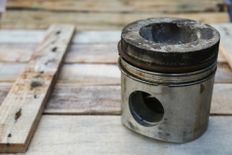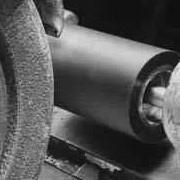
If you take a broken machine to a mechanic and are told you need piston rod repairs, you might feel a bit in the dark about what you’re paying for. However, the first step is learning how hydraulic cylinders work—the mechanisms that house piston rods. If this all sounds unfamiliar, use the following guide to get informed.
What Are Hydraulic Cylinders?
Cylinders are key aspects of hydraulic systems, and responsible for generating linear motion by transforming fluid pressure into velocity. They consist of a piston, rod, piston seal, gland, and butt.
How Do They Work?
 The piston is located inside the cylinder, and its diameter will dictate the amount of force it can generate. The piston seal prevents the pressure from passing through the cylinder, so it builds up inside. However, this component can sometimes become worn out.
The piston is located inside the cylinder, and its diameter will dictate the amount of force it can generate. The piston seal prevents the pressure from passing through the cylinder, so it builds up inside. However, this component can sometimes become worn out.
The rod is the shaft of the cylinder, and it passes through the piston. This is the component that does most of the work in a hydraulic cylinder, and it is made up of solid, unfinished steel. It must be kept smooth and strong to avoid damage to the seals, which could allow pressure to leak out.
The rod’s full range of motion through the cylinder is known as the stroke. As it extends and retracts, it moves through the gland, which is responsible for keeping debris and sediment out of the cylinder. The butt is simply the base of the mechanism, which is often used to attach the cylinder to something else.
If you’d like to learn more about hydraulic cylinders or believe you need piston rod repairs, turn to the experts at R. A. Heller Co. of Cincinnati, OH. Since 1946, they have helped customers in a wide range of industries find the mechanical solutions they need. Whether you’re interested in hard chrome plating or centerless grinding, you can find what you need from this cutting-edge shop. To learn more about their skills, visit the website, or call (513) 771-6100 to inquire about piston rod repairs.
About the Business
Have a question? Ask the experts!
Send your question

